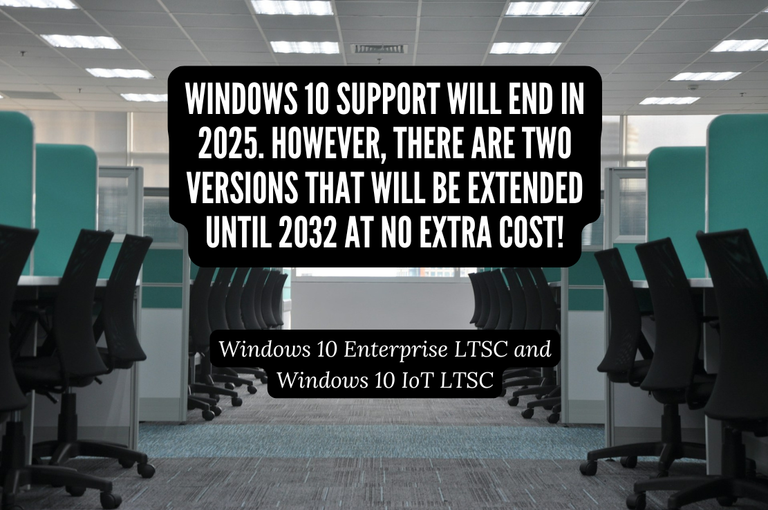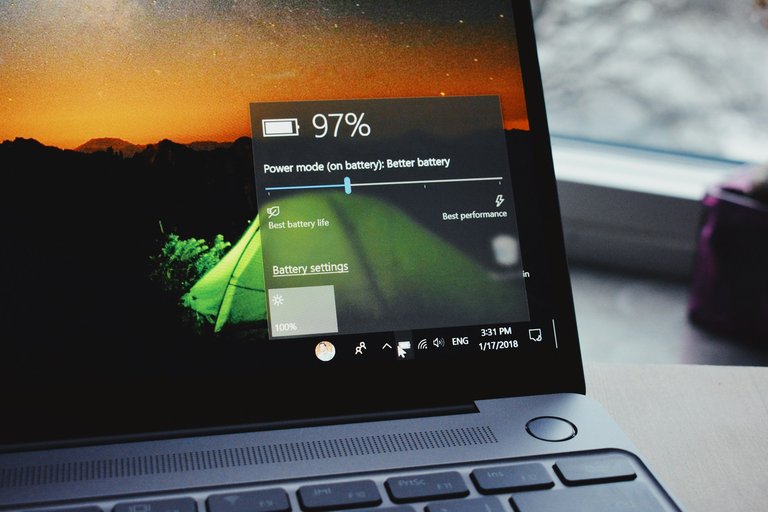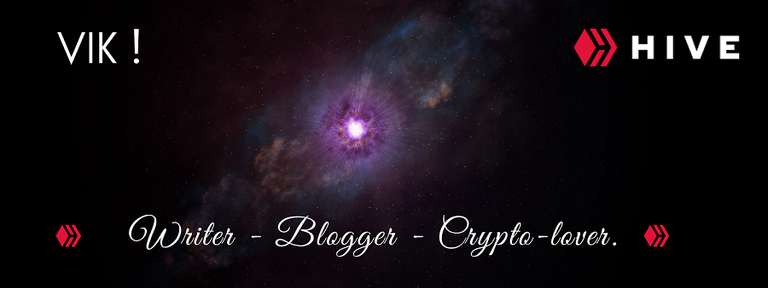Windows 10 support will end in 2025. However, there are two versions that will be extended until 2032 at no extra cost! | W10 Enterprise LTSC and W10 IoT LTSC

kate.sade | Unsplash
Getting attached to an operating system can be quite common. It makes more sense if we were fortunate enough that its performance met our expectations when carrying out the tasks demanded in our daily lives. There may be various reasons behind making the leap to a newer version, but mainly the one that often arises is the end of support in the license we had acquired.
I know that nothing lasts forever, but in some cases, we can stretch its use a bit longer, at least until the next version becomes significantly stable. I mention this because when a new operating system is released to replace another, it is most likely filled with bugs. Surely, many people have complained about blue screens due to poor memory management or software issues that hinder the user experience. In most cases, this requires many consecutive updates until the errors are fixed, something that many people disapprove of and negatively impact the team behind it.
It's likely that you have encountered a municipal employee who could assist you with your procedures more than once. You may have also noticed that older operating systems are often used, I would even venture to say that I have seen Windows 7 on some computers. In general, office use does not require higher performance, and that may be why they have not been modernized. Why make it difficult if it is already useful and functional as it is?
It is clear that many companies and organizations prefer to stick with slightly older versions that do not require updates that could hinder ongoing activities. In some cases, investing time in that could lead to very dissatisfied clients and possibly a reprimand from the department head. Considering this, it is understandable that a sustainable version of Windows, covering the basics for work, is a highly viable option to consider.

Joachim Pressl | Unsplash
Windows 10 has performed quite well. At least its users are completely satisfied with the features that this system has managed to provide. Whether in terms of office work, gaming, or processes related to the creation of audiovisual content (such as rendering), it has shown good performance and stability throughout the lifespan of this great system. However, the passage of time indicates that we need to upgrade to a new era, especially now that artificial intelligence is being integrated, making the transition to Windows 11 inevitable.
We still have several months ahead where we can continue using Windows 10 along with any updates that are being implemented. At least this will be the case until the last day, October 14, 2025, when Microsoft has decided that no more support will be available. This means that there will be no more security and maintenance updates. This decision will affect the Pro and Home versions, which are the most common among average users.

Panos Sakalakis | Unsplash
With Windows 10 being released in 2015, it was expected to be the ultimate operating system. However, a new version arrived in 2021: Windows 11. As mentioned earlier, this version was plagued with errors, causing users to prefer not to transition to a version where everything could go wrong, especially performance-related issues, although they have been gradually resolved over time.
The business world tends to move at a slower pace when it comes to changes. For this reason, it is likely that they will not make the switch to the new version until the deadline, when they will be required to upgrade to Windows 11 to avoid potential security problems or critical vulnerabilities where both the system and the company may have points of intrusion. It is crucial to consider this, whether it is a financial company or one that stores a significant amount of confidential data.
A solution to this could be to access an extended version. For this, there are some versions that do not have some add-ons, or that may be unnecessary in these large-scale organizations. They are known as LTSC (Long-Term Servicing Channel) editions, which in turn have two versions; Enterprise and IoT. This edition manages to keep the updates ongoing, with support that can easily extend until the year 2032, depending on the architecture being used. The good and remarkable thing is that there are no extra expenses, as it is included in the license. Perhaps the downside is that it is much more oriented towards organizations and not towards the casual domestic public.
There is an alternative for users who do not use LTSC, such as the additional support ESU version (Extended Security Updates Program), but it is also in some way focused on organizations. In this case, Microsoft has not commented on an extended version of updates in Windows 10 for the common user, but if we take into account the demand from the community, there may be a certain flexibility to access this version, as has happened previously with Windows 7 on some occasions.

- Main image edited in Canva.
- I have consulted information at genbeta.com.
- Translated from Spanish to English with Hive Translator.
Posted Using InLeo Alpha
Congratulations!
✅ Good job. Your post has been appreciated and has received support from CHESS BROTHERS ♔ 💪
♟ We invite you to use our hashtag #chessbrothers and learn more about us.
♟♟ You can also reach us on our Discord server and promote your posts there.
♟♟♟ Consider joining our curation trail so we work as a team and you get rewards automatically.
♞♟ Check out our @chessbrotherspro account to learn about the curation process carried out daily by our team.
🏅 If you want to earn profits with your HP delegation and support our project, we invite you to join the Master Investor plan. Here you can learn how to do it.
Kindly
The CHESS BROTHERS team
que interesante, buen post!